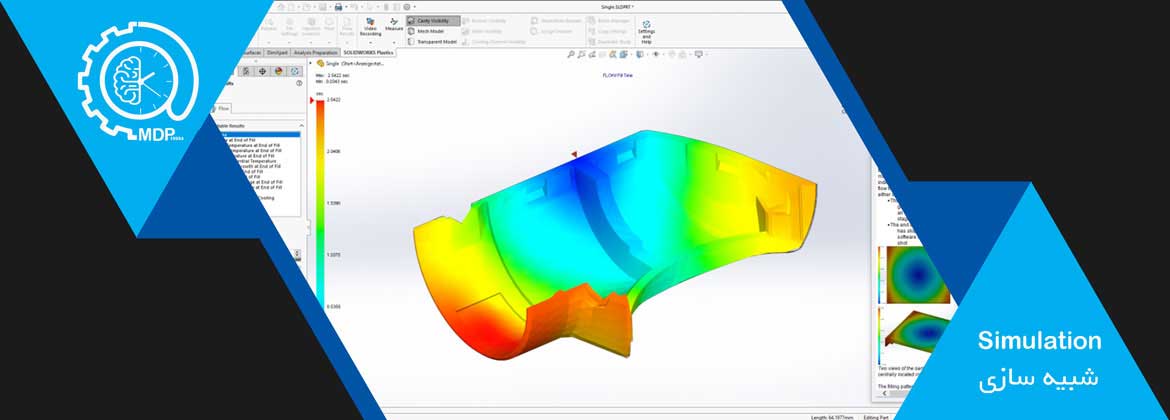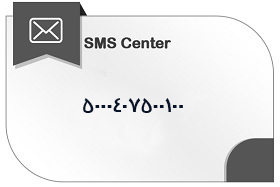he predictive values of two MRI and MRV neuroimaging tests in headache patients without neurologic symptoms
Department of imaging, Milad Hospital,TEHRAN, IRAN
Abstract
Background and Purpose: This study conducted to evaluate the predictive values of two MRI and MRV diagnostic tests in headache patients with different non-specific neurologic symptoms such as blurred vision, nausea, and dizziness sings or all of them.
Materials and Methods: The research population consisted of peoples (n: 54, male; n: 176, female) who referred to three Tehran hospitals, Departments of Neurology, were assigned into 2 groups based on their clinical symptoms, including: HG: patient only suffered from headaches; HBNDG: patients suffered from headache accompanied with one blurred vision, or nausea, and or dizziness sings or all of them. Then, brain MRI and MRV tests were performed for all subjects. There was a poor agreement between two neuroimaging tests in both HG and HBNDG patients. MRI test had low sensitivity in HG patients, HBNDG patients and in all participants. So MRI was a highly specific test in two groups.
Results: There was no significant difference between groups based on different clinical symptoms (P = 0.33) in age. The female participants had significantly lower age in comparison with males (40.3 ± 0.97 vs. 45.5 ± 2.04, respectively, P = 0.005). MRV was a relatively sensitive test in all participants (≥ 50). Additionally, the specificity was moderate (nearly 64.5) in all groups.
Conclusions: This investigation shows MRV is more sensitive than MRI for recognition of brain abnormalities in patients with headaches accompanied by nausea, dizziness, and blurred vision. It was suggested that the combination of these clinical symptoms with headache increase the diagnostic values of the MRV test.
Keywords: MRI, MRV, neuroimaging, headache patients
1. Introduction
Headaches are considered as most common neurological issues which everyone certainly has been experienced at least one time in her/and his life [1]. It has been showed that headaches include up to 30% of patients with neurologic symptoms [2]. Headache problems are categorized in term of clinical pattern and etiology into two primary and secondary groups. The primary headaches are the most common headaches and included 98% of headaches, although potentially affect the quality of life, which revealed that there is any abnormal findings in imaging results [1]. Whereas, secondary headaches are associated with a pathologic abnormality in the brain such as increased intracranial pressure, infection or arterial disorders, etc., with the possibility of life-threatening [3]. The most of headaches can be diagnosed and managed according to correct clinical taking and examination [4]. Sometimes, it may be confusing to diagnose common headache disorders due to many patients cannot present some accurate symptoms from their headaches to clinicians. So, practitioners prefer to perform more diagnostic investigations to justify that headaches disorders are not a severe disease [5].
There are different diagnostic neuroimaging tests can perform to manifest brain abnormalities in a patient with headaches. Neuroimaging with magnetic resonance imaging (MRI), magnetic resonance venography (MRV), computed tomography (CT) and CT venography are the most useful investigations for determining neurologic disorders [6]. The diagnostic values of these neuroimaging tests are not similar in different abnormalities. It was shown that abnormal neurological symptoms can increase to yield a significant positive neuroimaging finding [7].
Moreover, neuroimaging modalities have some risks for patients, as well as very expensive. Sometimes, it is not needed to perform different researches for diagnosing common headaches and an accurate clinical examination can help to make an proper and economic decision before more investigations work up [8].
Although there are different findings according to diagnostic values of various neuroimaging tests, there are inconsistence data regarding the importance of clinical features for selecting a sensitive and specific neuroimaging test in headaches [7].
Therefore, we performed two different neuroimaging tests (MRI vs. MRV) in patients only suffered from headaches and patients suffered from headaches accompanied by different clinical symptoms such as blurred vision, nausea, and dizziness sings or all of them. To evaluate the predictive values of two MRI and MRV diagnostic tests in headache patients without specific clinical symptoms of neurologic disorders. (Fig. 1). We hope to make a correct and proper clinical decision, decrease unnecessary investigations, and accelerate to the best treatment in patients with idiopathic headaches.
Figure 1. It was shown normal brain (a) and the thrombosis positive cord sign in the right transverse sinus (b) in MRV.
2. Materials and Methods
2.1. Study population
A prospective, observational study conducted among peoples (n: 54, male; n: 174, female) who referred to three Tehran hospitals, Departments of Neurology, were enrolled between August 2015 and December 2018. The inclusion criteria included age over 9 years[f1] [f2] , and with a headache complication (exception non-migraine headache). The study was confirmed by the local ethics committee of the hospital, informed consent was reached from the patients. These hospitals are longstanding and well-known hospitals specialized for neurology and neurosurgery.
Patients either show themselves, age, sexuality, duration of headache, the other clinical symptoms excepted of headaches such as history of seizures, concomitant illnesses, and existing pregnancy were all recorded. The patients were assigned into 2 groups according to their clinical symptoms, including: HG: patient only suffered from headaches; HBNDG: patients suffered from headache accompanied with one blurred vision, or nausea, and or dizziness sings or all of them.
Then, these participants were referred to assessed brain imagines including brain magnetic resonance imaging (MRI), and brain magnetic resonance venography (MRV). MRI and MRV were performed using 1.5 Tesla GE Simens scanner.
According to brain imagines, main diagnoses were assigned into two following groups: positive brain abnormalities (P) or and negative cerebrovascular abnormalities (N).
2.2. Statistical analysis
The demographic characteristics of participants (sexuality, age), clinical symptoms and imagines findings were collected into databases created in Microsoft Excel 2016 Microsoft. Then, all databases were imported into SAS for data analyzing. Analyses were performed with SAS version 9.1 (SAS Institute, Cary, NC, USA). Data of age was analyzed with one way-ANOVA test (a GLM PROC in SAS). The fixed effect was group based on gender and clinical symptoms. Then, the Cohen’s kappa coefficients for pairs of diagnostic tests were computed with the FREQ PROC. Due to independent diagnostic tests were imperfect, sensitivity, and specificity of individual tests was estimated using LCA PROC. Statistical significance was determined at P< 0.05.
3. Results
According to Table 1, the age ranged from 9 years to 76 years and the mean age was shown for two men and women as well as different groups of clinical symptoms. Males included 23.68 % of the patients (n= 54) and females included 76.5 % of the subjects (n= 176). There was no significant difference in age between groups based on different clinical symptoms (P = 0.33). The female participants had significantly lower age in comparison with males (40.3 ± 0.97 vs. 45.5 ± 2.04, respectively, P = 0.005).
| Table 1. The effects of clinical symptoms grouping and gender on age with one-way ANOVA. | |||
| Variable | Frequency (n, %) | Age (mean ± SD) | P values1 |
|
Clinical symptoms HG2 HBNDG2 |
228 (100) 147 (64.5) 86 (35.5) |
41.6 ± 1.2 41.34 ± 3.1 |
P = 0.41 |
|
Gender Male Female |
54 (23.68) 176 (76.5) |
45.5 ± 2a 40.3 ± 0.97b |
P = 0.005 |
|
1 P values ≤ 0.05 are considered as significant 2 HG: patients with headache; HBNDG: patients with headaches, blurred, nausea dizziness. a Different superscripts indicates significant difference between groups (P < 0.05) |
|||
Cohen’s kappa coefficient is a statistic that evaluated the agreement between diagnostic tests. In this study, two neuroimaging tests were performed in patients with only headache and headache accompany other symptoms. The Cohen’s kappa coefficients were evaluated the correlation between two tests in two groups. According to Table 2, there was a poor agreement between two neuroimaging tests in both HG and HBNDG patients.
| Table 2. Cohen’s kappa coefficients between two diagnostic tests (MRI and MRV) for HG and HBNDG | |||
| Group | κ value1 |
p value for H0: κ = 02 |
|
| MRI | MRV | ||
| HG3 | - 0.008 | 0.88 | |
| HBNDG3 | 0.02 | 0.67 | |
| Total | 0.003 | 0.92 | |
|
1 κ values are between -1 to +1. 2 P values ≤ 0.05 are considered as significant. 3 HG: patients with headache; HBNDG: patients with headaches, blurred, nausea dizziness. |
|||
The sensitivity and specificity of two neuroimaging diagnostic tests without any gold standard test were estimated by Latent Class Analysis (LCA) (Table 3). LCA can use to estimate sensitivity and specificity of independent tests when there is not an imperfect diagnostic test. MRI test had low sensitivity in patients with the only headache, headache accompanied by other general symptoms and in all participants. Whereas MRI was a highly specific test in two patient groups with only headache and groups with headache accompany other general symptoms.
MRV was a relatively sensitive test in all participants (≥ 50). Additionally, the specificity was moderate (nearly 64.5) in all groups.
| Table 3. LCA for two neuroimaging tests in HG and HBNDG patients for detecting brain abnormalities. | ||||
|
Group |
MRI | MRV | ||
| Sensitivity (95% CI)1 |
Specificity (95% CI)1 |
Sensitivity (95% CI)1 |
Specificity (95% CI)1 |
|
| HG2 | 5.7 (4.3- 6.9) | 93.6 (92.1-95.1) | 52.8 (1.7-100) | 64.2 (62-66.4) |
| HBNDG2 | 3.3(0- 6.2) | 98.1 (95.3-100) | 67.1 (10.3- 100) | 64.6 (63.1-66.1) |
| Total | 5 (3.5- 6.5) | 95.3 (92.5- 98.1) | 54.8 (3.11-100) | 64.9 (63.2-66.6) |
|
1 CI presents confidence interval. 2 HG: patients with headache; HBNDG: patients with headaches, blurred, nausea dizziness. |
||||
4. Discussion
Usually, in neurologic lesions the clinical findings are revealed according to the mechanism of neurological dysfunction. These features make suggestions that should be accepted by a proper neuroimaging investigation and finally make an accurate diagnose [9]. For example, in cerebral venous thrombosis (CVT), patients clinically show diffuse headache and some focal neurologic symptoms (papilledema). These clinical symptoms pay attention to intracranial hypertension causes [10]. So, practitioners attempted to prevent any delay for treatment by imaging with the most reliable and rapidest modality. Additionally, durations of presenting clinical symptoms may help for selecting an appropriate imaging test. So the imaging findings may be differed due to the time of imaging from the occurrence of brain lesions [11, 12].
However, in this work we confronted with two groups of patients that complicated from isolated headache, and or headache accompanied by several non-neurologic signs (nausea, dizziness, and blurred vision). These features clinically made a diagnostic challenge. Because of this we did not have any gold standard examination tests. There is any agreement between two MRI and MRV tests (Cohens kappa coefficient values < 0.1) confirmed the aforementioned statement.
Then, it is computed the LCA approach to compare diagnostic values of two tests in both patient groups.
According to LCA findings, MRV was a relatively sensitive neuroimaging test that can be performed to make a sufficient clinical decision. These findings were expectable due to MRV and MRI which have various operator characteristics. The greater MRV sensitivity might have been due to it can make an intravenous contrast dye to detect vascular disorders such as thrombosis. It also diagnoses deep vein thrombosis with high sensitivity in the first days of thrombosis formation [13].
Furthermore, it was revealed that the contrast-enhanced 3D T1-weighted gradient-echo MRI is the most accuracy for the discovering of dural venous sinus and/or cortical venous thrombosis in comparison with conventional MRI and MRV imaging tests [14].
Based on LCA results, MRI had higher specificity for patients with headache without any neurologic symptoms. MRV was moderately specific in this study. According to Lomont et al. (2003) presenting paralysis, reduced conscious level and papilloedema with headache predicted brain abnormalities in neuroimaging examination [7]
We have observed that 76.5 % of participants were women suffered from a headache. This finding is consistent with the findings of previous studies. They have been showed different subtypes of primary and secondary headaches have more incidences in women than men [15, 16].
Moreover, 1.14% of women (n=2) were pregnant and presented headache related to pregnancy. Although, their MRI test was negative, significant brain abnormalities were observed on MRV examinations. The sampling population was plausible affected this result. However, physiologic alterations initiated by pregnancy promote the risk of CVT, pituitary and dissection apoplexy [17]. Therefore, unique considerations regarding the differential diagnosis, imaging options, and medical management are important for evaluating the pregnant patient with headache.
Although, men with headache were significantly older than women (45.5 vs. 40.3 years), we found no data regarding the significant difference of age between sexes. This finding likely is related to sampling population that was not randomized, and then it cannot be generalized in the headache population.
Headaches are the most common neurological issues categorized into two primary and secondary groups based on etiology and clinical symptoms [1]. In the present study, nearly 64.5 % of participants complicated from mild to severe headache without other clinical sings (HG). The neuroimaging tests (MRI and MRV) were obtained to make an accurate clinical decision. The imaging results showed that only 93.9 % of HG was negative in MRI test, whereas, 35.4% of HG discovered positive results on MRV investigation.
In the present study, 6.14 % of participants presented only dizziness, while, 7.02 % of patients presented the combination of nausea and dizziness related to headache. It was shown in the US, near 130 000 to 220 000 patients with stroke referring to the emergency department with dizziness related headache annually [18]. Additionally, dizziness is the symptom most tightly linked to missed stroke [18, 19]. However, it was estimated performing neuroimaging for every patient presenting dizziness related headache in the US, would be cost >$1 billion annually [20]. In a wide range of abnormalities were occurred, the combination of nausea and dizziness such as TBI, aneurysm, and cerebrovascular disorders such as venous thrombosis were similar in both groups. Although there is a rule to obtain an MRI investigation in acute dizziness, the risk of false-negative findings was cleared in the first 48 hours of cerebrovascular disorders by MRI.
Blurred vision is also a non-neurologic symptom of brain pathology that presents with headaches in some cerebrovascular disorders, brain tumor [21], migraine headaches [22], as well as brain aneurysm [23]. According to the research findings, 6.6 % of participants had only blurred vision related to headache and 7.02 % of them presented blurred symptoms accompany nausea or dizziness (HBNDG). There were not observed positive MRI results in HBNDG patients. Also there were positive finding on MRV investigations in HBNDG (31.25 %)
5. Conclusion
The findings of the research showed that MRV is more sensitive than MRI neuroimaging test for recognition of brain abnormalities in patients with headaches and or headache accompanied by nausea, dizziness, and blurred vision. According to findings of research it was suggested that the combination of these clinical symptoms with headache increase the diagnostic values of MRV test. The appearance of neurological symptoms might increase to yield a positive neuroimaging finding and increased predictive values of neuroimaging tests.
6. Declarations
- Ethics approval and consent to participate: Not applicable
- Consent for publication: Not applicable
- Availability of data and material: Data sharing is not applicable to this article as no datasets were generated or analysed during the current study.
- Competing interests: Not applicable
- Funding: Not applicable
- Authors' contributions: Not applicable
- Acknowledgements: Not applicable
References
1.Ahmed, F., Headache disorders: differentiating and managing the common subtypes. British journal of pain, 2012. 6(3): p. 124-132.
2.Yoon, M., et al., Prevalence of primary headaches in Germany: results of the German Headache Consortium Study. The journal of headache and pain, 2012. 13(3): p. 215.
3.Do, T.P., et al., Red and orange flags for secondary headaches in clinical practice: SNNOOP10 list. Neurology, 2019. 92(3): p. 134-144.
4.Lee, V.M.E., et al., The adult patient with headache. Singapore medical journal, 2018. 59(8): p. 399.
5.Holle, D. and M. Obermann, The role of neuroimaging in the diagnosis of headache disorders. Therapeutic advances in neurological disorders, 2013. 6(6): p. 369-374.
6.Hatami, H., et al., Evaluation of Diagnostic Values in NCCT and MRI of the Patients With Cerebral Venous or Sinus Thrombosis in Loghman Hakim Hospital in Tehran 2014-2018. International Clinical Neuroscience Journal, 2019. 6(1): p. 17-21.
7.Lamont, A., N. Alias, and M. Win, Red flags in patients presenting with headache: clinical indications for neuroimaging. The British journal of radiology, 2003. 76(908): p. 532-535.
8.Micieli, A. and W. Kingston, An Approach to Identifying Headache Patients That Require Neuroimaging. Frontiers in Public Health, 2019. 7: p. 52.
9.Saposnik, G., et al., Diagnosis and management of cerebral venous thrombosis: a statement for healthcare professionals from the American Heart Association/American Stroke Association. Stroke, 2011. 42(4): p. 1158-1192.
10.Appenzeller, S., et al., Cerebral venous thrombosis: influence of risk factors and imaging findings on prognosis. Clinical neurology and neurosurgery, 2005. 107(5): p. 371-378.
11.Damak, M., et al., Isolated lateral sinus thrombosis: a series of 62 patients. Stroke, 2009. 40(2): p. 476-481.
12.Wasay, M. and M. Azeemuddin, Neuroimaging of cerebral venous thrombosis. Journal of Neuroimaging, 2005. 15(2): p. 118-128.
13.Cantwell, C.P., et al., MR Venography with true fast imaging with steady-state precession for suspected Lowerlimb deep vein thrombosis. Journal of vascular and interventional radiology, 2006. 17(11): p. 1763-1770.
14.Sari, S., et al., MRI diagnosis of dural sinus—Cortical venous thrombosis: Immediate post-contrast 3D GRE T1-weighted imaging versus unenhanced MR venography and conventional MR sequences. Clinical neurology and neurosurgery, 2015. 134: p. 44-54.
15.Zhang, Y., et al., Prevalence of primary headache disorders in a population aged 60 years and older in a rural area of Northern China. The journal of headache and pain, 2016. 17(1): p. 83.
16.Felício, A.C., et al., Epidemiology of primary and secondary headaches in a Brazilian tertiary-care center. Arquivos de neuro-psiquiatria, 2006. 64(1): p. 41-44.
17.Schoen, J.C., R.L. Campbell, and A.T. Sadosty, Headache in pregnancy: an approach to emergency department evaluation and management. Western Journal of Emergency Medicine, 2015. 16(2): p. 291.
18.Saber Tehrani, A.S., et al., Rising annual costs of dizziness presentations to US emergency departments. Academic Emergency Medicine, 2013. 20(7): p. 689-696.
19.Tarnutzer, A.A., et al., ED misdiagnosis of cerebrovascular events in the era of modern neuroimaging: a meta-analysis. Neurology, 2017. 88(15): p. 1468-1477.
20.Saber Tehrani, A.S., et al., Diagnosing stroke in acute dizziness and vertigo: pitfalls and pearls. Stroke, 2018. 49(3): p. 788-795.
21.Muthukumar, N., Cerebral venous sinus thrombosis and thrombophilia presenting as pseudo-tumour syndrome following mild head injury. Journal of Clinical Neuroscience, 2004. 11(8): p. 924-927.
22.Friedman, D.I. and R.W. Evans, Are blurred vision and short-duration visual phenomena migraine aura symptoms. Headache, 2017. 57(4): p. 643-647.
23.de Aguiar, G.B., et al., Spontaneous thrombosis of giant intracranial aneurysm and posterior cerebral artery followed by also spontaneous recanalization. Surgical neurology international, 2016. 7.
[f1]ایا اطلاعاتی در مورد اعتیاد ،مصرف سیگاریا مصرف دارویی خاص در بیماران هست؟اگه مطممئن هستین تمام افرا سابقه مصرف ماده خاصی ندارند عبارت زیر را به این جمله اضافه کنین
[f2] [f2], Without any substances abuse
نگارش پروپوزال کارشناسی ارشد و دکتری - نگارش رساله دکتری - نگارش مقاله پژوهشی - نگارش مقاله ISI نگارش مقاله مروری - نگارش مقاله کنفرانسی - نگارش پایان نامه کارشناسی ارشد - استخراج مقاله










































